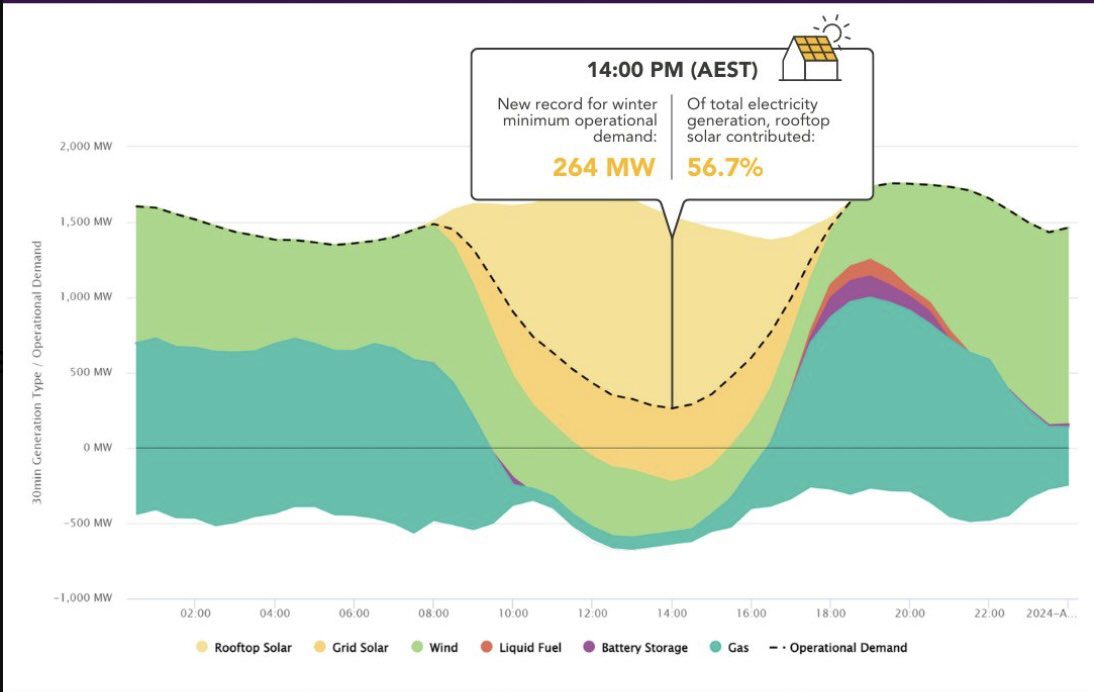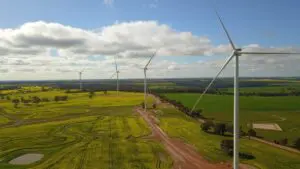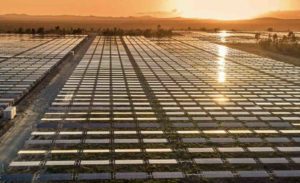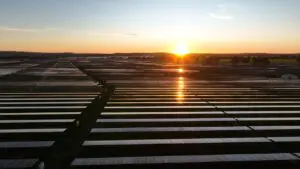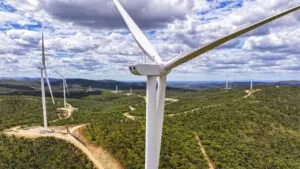Rooftop solar has met up to 80 per cent of the electricity demand in South Australia – in the middle of winter – and helped push “operational” grid demand in both that state and neighbouring Victoria to record low for the season over the weekend.
The Australian Energy Market Operator says operational demand hit a new low of 264 megawatts at 2pm (AEST) on Sunday in South Australia, and an hour earlier – at 1pm (AEST) set a new winter operational demand low of 2,810 MW in Victoria.
AEMO says the primary reason for this record low demand was mild weather and sunny skies. It noted that at the time of these records rooftop solar was providing 57 per cent of all generation in South Australia, and 37 per cent in Victoria.
More importantly, rooftop solar was meeting 80 per cent of all local demand in South Australia at the time, and 44 per cent of demand in Victoria.
Why is this important? As AEMO notes in its announcement of the news on Twitter/X, minimal power occurs when electricity demand is largely met by rooftop solar. “This can bring challenges to keep the grid operating securely,” it notes.
In fact, minimum demand is rated as big a problem as the summer demand peaks, because of their complexity for the management of the grid.
And Sunday’s new winter records are just a foretaste of what can be expected in the coming spring, when mild weather reduces demand even further and better solar conditions ramp up the production from PV modules mounted on the rooftops of homes and businesses.
Rooftop solar has already – on a couple of occasions – produced enough power to meet all local demand in South Australia, and is heading to that direction in other states, including Western Australia and Queensland.
AEMO doesn’t like it because it wants assets it can control to be switched on to give it the levers it can pull to respond to any unexpected events.
Which is why it is pushing for more storage, and more “dynamic” controls over rooftop solar and other consumer energy devices which are emerging as a critical part of the green energy transition.
The rise of rooftop solar – the result of the plunging price of PV modules and rising retail bills caused by the fossil fuel price shock and the naked greed of big utilities – has implications for other generation assets too.
The owners of coal fired generators says it presents issues for their ageing so called “baseload” assets because they cannot be “always on” – and have to ramp down to make way for locally generated solar.
That is one reason why coal fired generators are seeking to exit the system, or source large state government subsidies to stay on, as Origin Energy has successfully negotiated in NSW.
It is also why energy experts, including AEMO and the big utilities, say the future of the energy system does not lie in “baseload” power but in flexible and dispatchable generation.
And that makes a nonsense of the Coalition push to replace that “baseload” power with yet more “baseload”, this time in the form of expensive nuclear.
Numerous experts have now pointed out that rooftop solar and nuclear energy do not easily go hand in hand, and whatever amounts of nuclear capacity that the Coalition intends to force into the grid over the next two decades will have to result in an equal amount of curtailment and additional storage of rooftop solar and other renewables.
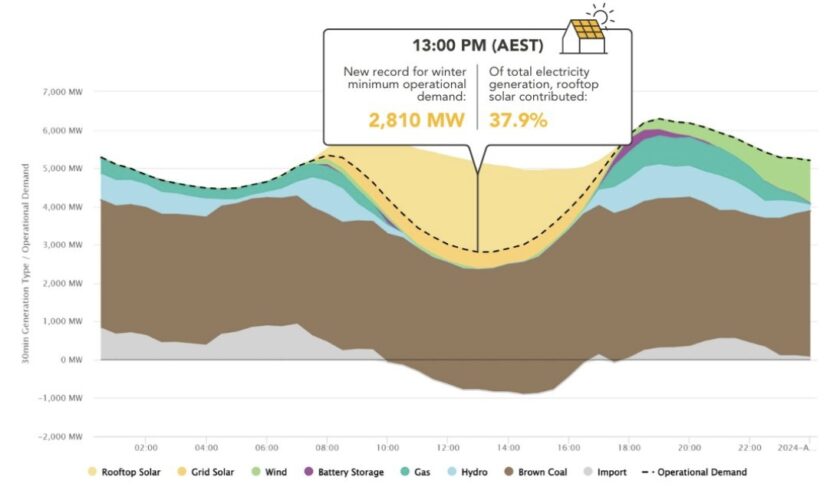
Victoria, it should be noted, has 4,850 MW of brown coal capacity, and at the peak of rooftop solar output on Sunday was producing around 3,300 MW from its coal generators, helped by the fact that Tasmania is currently hungry for imports as it seeks to conserve its dwindling hydro resources after recent dry weather.
South Australia at the time was exporting to Victoria – it was producing only the minimum 80 MW of fossil fuel generation at the time – while Victoria was also exporting large amounts to NSW.

